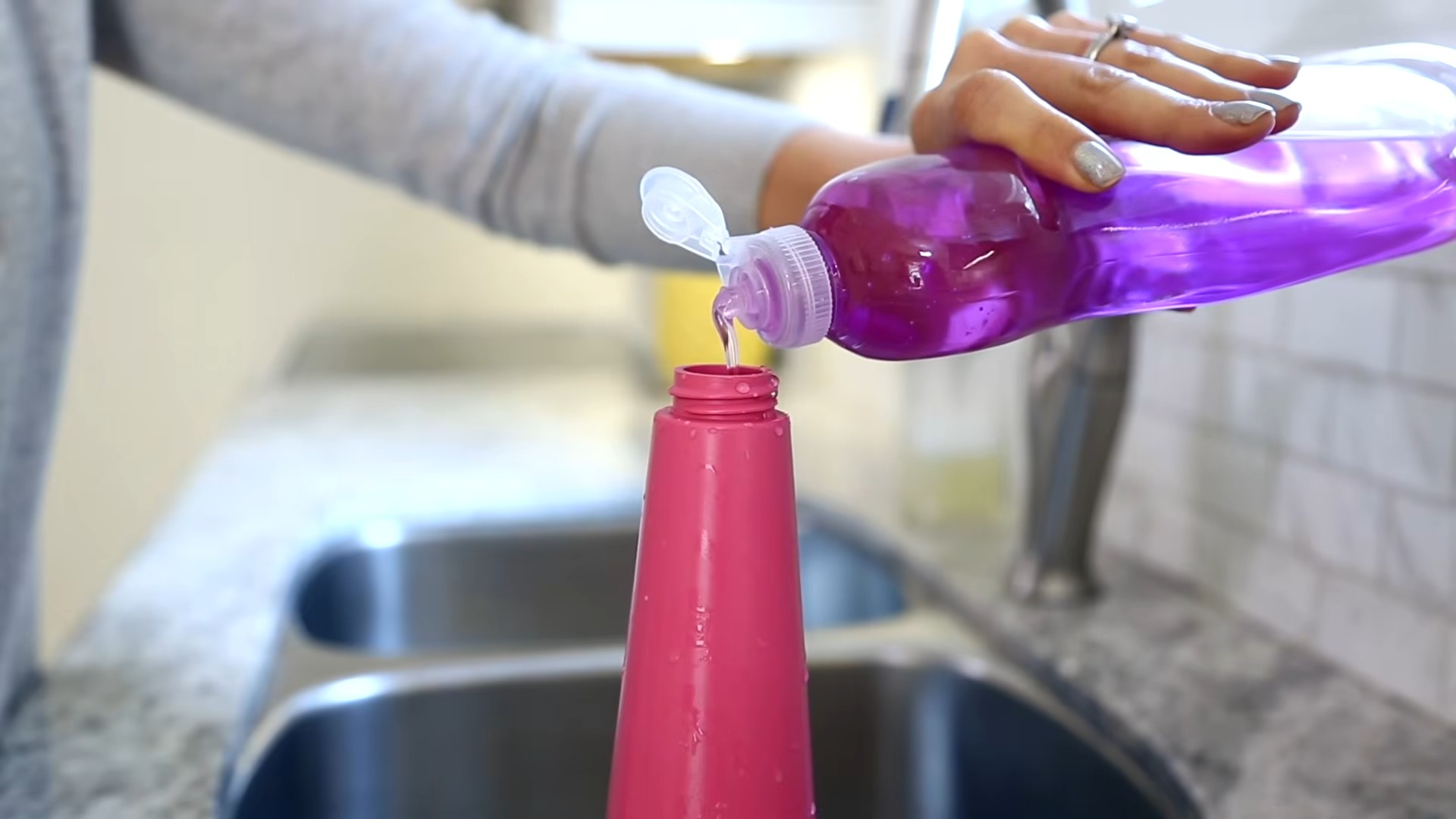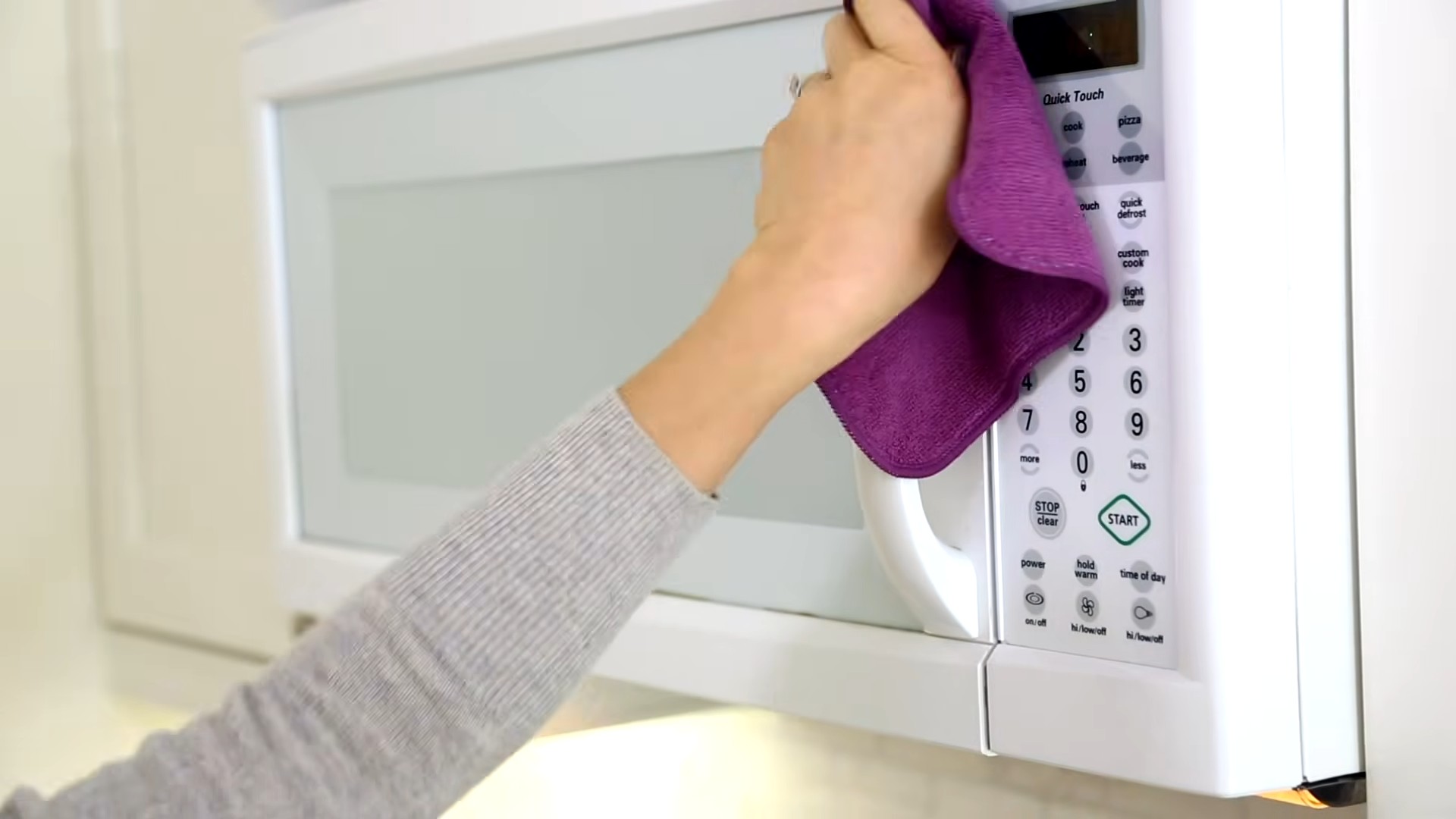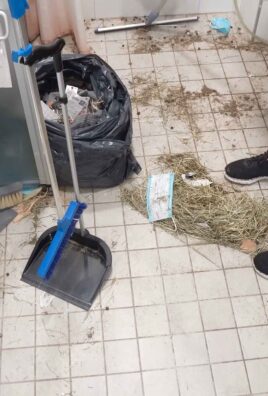Dish Soap Cleaning Hacks: Who knew that the humble bottle of dish soap hiding under your sink held the key to a sparkling clean home, inside and out? I’m constantly amazed by the versatility of everyday items, and dish soap is definitely a superstar. For generations, people have relied on its grease-cutting power in the kitchen, but its uses extend far beyond just washing dishes. From tackling stubborn stains to giving your garden a helping hand, dish soap is a true multi-tasker.
Think about it – our grandmothers probably used a simple soap solution for a myriad of cleaning tasks. While the formulas have evolved, the core principle remains: dish soap is effective and readily available. But why should you care about these DIY cleaning tricks? Well, for starters, you can save money by reducing your reliance on expensive, specialized cleaning products. Plus, many commercial cleaners contain harsh chemicals that can be harmful to your health and the environment. With these dish soap cleaning hacks, you’ll discover a safer, more affordable, and surprisingly effective way to keep your home and garden looking their best. Get ready to unlock the hidden potential of this everyday essential!

Dish Soap Cleaning Hacks: Unleash the Power of Your Kitchen Staple!
Hey there, fellow cleaning enthusiasts! I’m about to let you in on a little secret: that bottle of dish soap sitting by your sink is a cleaning powerhouse just waiting to be unleashed. Forget expensive specialty cleaners – dish soap can tackle a surprising number of household messes. I’ve personally tested these hacks, and trust me, they work wonders! So, grab your favorite dish soap (I prefer a grease-cutting formula for most of these), and let’s get cleaning!
General Tips for Dish Soap Cleaning
Before we dive into the specific hacks, here are a few general tips to keep in mind:
* Dilution is Key: Dish soap is concentrated, so a little goes a long way. Always dilute it with water unless otherwise specified. Using too much can leave a residue that’s hard to rinse away.
* Test in an Inconspicuous Area: Before applying dish soap to a large or delicate surface, test it in a hidden spot to ensure it doesn’t cause discoloration or damage. This is especially important for fabrics and painted surfaces.
* Rinse Thoroughly: After cleaning with dish soap, always rinse the area thoroughly with clean water to remove any remaining soap residue.
* Use Warm Water: Warm water generally works better than cold water for dissolving grease and dirt.
* Don’t Mix with Bleach: This is a crucial safety tip! Never mix dish soap with bleach, as it can create toxic fumes.
Hack 1: Sparkling Clean Windows and Mirrors
Tired of streaks on your windows and mirrors? Dish soap to the rescue! This is one of my go-to methods for achieving a crystal-clear shine.
What You’ll Need:
* Dish soap
* Warm water
* Spray bottle
* Microfiber cloths (two: one for washing, one for drying)
Step-by-Step Instructions:
1. Prepare the Cleaning Solution: Fill a spray bottle with warm water. Add only 1-2 drops of dish soap. Seriously, that’s all you need! Too much soap will leave streaks. Gently swirl the bottle to mix the soap and water.
2. Spray the Surface: Lightly spray the window or mirror with the cleaning solution. Don’t over-saturate it.
3. Wipe with a Damp Microfiber Cloth: Using a clean, damp microfiber cloth, wipe the entire surface of the window or mirror, removing dirt and grime.
4. Dry with a Clean, Dry Microfiber Cloth: Immediately dry the surface with a separate, clean, dry microfiber cloth. This is the key to preventing streaks. Use a circular motion to buff the surface to a shine.
5. Inspect and Repeat (if necessary): If you still see streaks or spots, repeat steps 2-4.
Hack 2: Degreasing Kitchen Surfaces
Dish soap is a champion at cutting through grease, making it perfect for cleaning kitchen surfaces like countertops, stovetops, and backsplashes.
What You’ll Need:
* Dish soap
* Warm water
* Spray bottle or bucket
* Sponge or microfiber cloth
Step-by-Step Instructions:
1. Prepare the Cleaning Solution: For light grease, mix a few drops of dish soap with warm water in a spray bottle or bucket. For heavier grease, you might need to increase the amount of dish soap slightly.
2. Apply the Solution: Spray the cleaning solution onto the greasy surface or dip a sponge or microfiber cloth into the bucket and wring out the excess water.
3. Scrub the Surface: Gently scrub the greasy surface to loosen the grime. For stubborn grease, let the solution sit for a few minutes before scrubbing.
4. Rinse Thoroughly: Rinse the surface thoroughly with clean water to remove all traces of soap.
5. Dry with a Clean Cloth: Dry the surface with a clean cloth to prevent water spots.
Hack 3: Cleaning Your Makeup Brushes
Did you know that your makeup brushes can harbor bacteria and product buildup? Cleaning them regularly is essential for healthy skin. Dish soap is a gentle yet effective way to remove makeup residue.
What You’ll Need:
* Dish soap (gentle formula)
* Warm water
* Small bowl or your hand
* Clean towel
Step-by-Step Instructions:
1. Wet the Brush Bristles: Run the bristles of your makeup brush under warm water. Avoid getting water on the handle, as this can loosen the glue that holds the bristles in place.
2. Add Dish Soap: Place a small drop of dish soap in the palm of your hand or in a small bowl.
3. Swirl the Brush: Gently swirl the brush bristles in the dish soap, creating a lather.
4. Rinse Thoroughly: Rinse the brush bristles under warm water until all traces of soap and makeup are gone. Squeeze out any excess water.
5. Reshape and Dry: Gently reshape the brush bristles and lay the brush flat on a clean towel to dry. Avoid standing the brush upright, as this can cause water to seep into the handle and loosen the glue.
Hack 4: Removing Stains from Clothing
Dish soap can be surprisingly effective at removing certain types of stains from clothing, especially grease and oil-based stains.
What You’ll Need:
* Dish soap
* Warm water
* Soft-bristled brush or cloth
Step-by-Step Instructions:
1. Test in an Inconspicuous Area: Before applying dish soap to the stain, test it in a hidden area of the garment to ensure it doesn’t cause discoloration.
2. Apply Dish Soap to the Stain: Apply a small amount of dish soap directly to the stain.
3. Gently Rub the Stain: Gently rub the dish soap into the stain using a soft-bristled brush or cloth.
4. Let it Sit: Allow the dish soap to sit on the stain for 15-30 minutes.
5. Rinse Thoroughly: Rinse the stained area thoroughly with warm water.
6. Launder as Usual: Launder the garment as usual, following the care instructions on the label.
7. Check Before Drying: Before placing the garment in the dryer, check to make sure the stain is completely gone. If the stain is still visible, repeat steps 2-6. Drying the garment with the stain still present can set the stain permanently.
Hack 5: Cleaning Jewelry
Want to give your jewelry a quick shine? Dish soap can help! This is a great way to remove dirt and grime from your favorite pieces.
What You’ll Need:
* Dish soap (gentle formula)
* Warm water
* Soft-bristled toothbrush
* Small bowl
* Clean cloth
Step-by-Step Instructions:
1. Prepare the Cleaning Solution: Fill a small bowl with warm water and add a few drops of dish soap.
2. Soak the Jewelry: Place the jewelry in the soapy water and let it soak for 10-15 minutes.
3. Gently Scrub: Use a soft-bristled toothbrush to gently scrub the jewelry, paying attention to any crevices or hard-to-reach areas.
4. Rinse Thoroughly: Rinse the jewelry thoroughly with warm water.
5. Dry with a Clean Cloth: Dry the jewelry with a clean cloth.
Important Note: This method is not suitable for all types of jewelry. Avoid using it on delicate stones like pearls, opals, and emeralds, as dish soap can damage them.
Hack 6: Cleaning Your Car’s Exterior
Yes, you can even use dish soap to wash your car! It’s a budget-friendly alternative to expensive car wash soaps.
What You’ll Need:
* Dish soap (gentle formula)
* Warm water
* Two buckets
* Wash mitt or sponge
* Hose
Step-by-Step Instructions:
1. Rinse the Car: Rinse the car thoroughly with a hose to remove loose dirt and debris.
2. Prepare the Cleaning Solution: Fill one bucket with warm water and add a small amount of dish soap. Fill the second bucket with clean water for rinsing.
3. Wash the Car: Dip a wash mitt or sponge into the soapy water and wash the car, starting from the top and working your way down.
4. Rinse the Mitt/Sponge: Rinse the mitt or sponge frequently in the clean water bucket to remove dirt and grime.
5. Rinse the Car: Rinse the car thoroughly with a hose to remove all traces of soap.
6. Dry the Car: Dry the car with a clean, soft towel or chamois

Conclusion
So, there you have it! These dish soap cleaning hacks are not just clever; they’re game-changers for your cleaning routine. We’ve explored how this humble kitchen staple can tackle everything from stubborn grease to grimy bathroom surfaces, all while saving you money and reducing your reliance on harsh chemicals. The versatility of dish soap is truly remarkable, and these DIY tricks are a testament to its cleaning power.
Why is this a must-try? Because it simplifies your life. Imagine replacing a cabinet full of specialized cleaners with one bottle of dish soap. Think of the time and money you’ll save, not to mention the peace of mind knowing you’re using a gentler, more eco-friendly solution. These hacks are practical, effective, and surprisingly easy to implement.
But the possibilities don’t stop here! Feel free to experiment with different variations to suit your specific needs. For example, if you’re dealing with particularly tough stains, try adding a tablespoon of baking soda to your dish soap solution for extra scrubbing power. For a refreshing scent, infuse your cleaning mixture with a few drops of your favorite essential oil, like lemon or lavender. You can also adjust the water-to-dish soap ratio depending on the surface you’re cleaning; a more concentrated solution might be necessary for heavily soiled areas.
Don’t be afraid to get creative and tailor these dish soap cleaning hacks to your own home and preferences. The key is to start with a small amount of dish soap and gradually increase it until you achieve the desired cleaning effect. Always test your solution on an inconspicuous area first to ensure it doesn’t damage the surface.
We’re confident that once you try these DIY tricks, you’ll be amazed by the results. They’re a simple, effective, and affordable way to keep your home sparkling clean. So, ditch the expensive cleaners and embrace the power of dish soap!
Now, we want to hear from you! Have you tried any of these dish soap cleaning hacks? What were your results? Do you have any other creative uses for dish soap that we haven’t mentioned? Share your experiences and tips in the comments below. Let’s create a community of cleaning enthusiasts who are passionate about finding simple, effective, and eco-friendly solutions for a cleaner, healthier home. We can’t wait to see what you discover!
Frequently Asked Questions (FAQs)
Is it safe to use dish soap on all surfaces?
While dish soap is generally safe for most surfaces, it’s always a good idea to test it on an inconspicuous area first, especially on delicate materials like wood, leather, or painted surfaces. Some dish soaps may contain ingredients that could potentially damage or discolor certain finishes. A diluted solution is usually best, and avoid using abrasive scrub brushes that could scratch the surface. If you’re unsure, consult the manufacturer’s instructions for the specific surface you’re cleaning.
What type of dish soap is best for cleaning?
For most cleaning tasks, a standard, non-antibacterial dish soap will work just fine. Avoid using dish soaps that contain added moisturizers or lotions, as these can leave a residue on surfaces. A clear, unscented dish soap is often a good choice, as it’s less likely to contain dyes or fragrances that could cause allergic reactions or discoloration. Ultimately, the best dish soap for cleaning is the one that effectively removes grease and grime without damaging the surface you’re cleaning.
Can I use dish soap to clean my car?
While dish soap can be used to wash your car in a pinch, it’s not the ideal solution. Dish soap is designed to cut through grease and oil, which means it can also strip away the wax and protective coatings on your car’s paint. Over time, this can lead to fading, oxidation, and other damage. If you do use dish soap to wash your car, be sure to use a very diluted solution and rinse thoroughly. For best results, use a car wash soap specifically formulated for automotive finishes.
How much dish soap should I use for cleaning?
The amount of dish soap you use will depend on the specific cleaning task and the concentration of the dish soap. As a general rule, start with a small amount – about a teaspoon or two per gallon of water – and gradually increase it until you achieve the desired cleaning effect. For heavily soiled areas, you may need to use a more concentrated solution. However, avoid using too much dish soap, as this can leave a sticky residue that’s difficult to rinse off.
Can dish soap be used to clean laundry?
While dish soap is not a substitute for laundry detergent, it can be used to pre-treat greasy stains on clothing. Apply a small amount of dish soap directly to the stain, gently rub it in, and let it sit for a few minutes before washing the garment as usual. Be sure to test the dish soap on an inconspicuous area of the fabric first to ensure it doesn’t cause discoloration. Avoid using dish soap in your washing machine, as it can create excessive suds that can damage the machine.
Is dish soap safe for septic systems?
Most dish soaps are safe for septic systems when used in moderation. However, it’s important to choose a dish soap that is biodegradable and phosphate-free. Phosphates can disrupt the balance of bacteria in your septic tank, which can lead to system failure. Avoid using excessive amounts of dish soap, as this can also overload your septic system. If you’re concerned about the impact of dish soap on your septic system, consider using a septic-safe dish soap specifically formulated for this purpose.
Can I use dish soap to clean my oven?
Yes, dish soap can be used to clean your oven, but it’s important to use it in conjunction with other cleaning agents like baking soda and vinegar. Create a paste of baking soda and water, and spread it all over the inside of your oven, avoiding the heating elements. Let it sit overnight. The next day, spray the baking soda paste with vinegar, and then scrub the oven clean with a sponge and warm, soapy water. Rinse thoroughly to remove any residue.
How can I prevent streaks when cleaning with dish soap?
Streaks can occur when cleaning with dish soap if you use too much soap or don’t rinse the surface thoroughly. To prevent streaks, use a diluted solution of dish soap and water, and rinse the surface multiple times with clean water. You can also use a microfiber cloth to dry the surface, as microfiber is excellent at absorbing water and preventing streaks. Another tip is to use distilled water for cleaning, as it’s free of minerals that can cause streaks.
What are some other creative uses for dish soap?
Beyond the cleaning hacks mentioned earlier, dish soap has many other creative uses. It can be used to make bubbles, remove stains from carpets, clean makeup brushes, lubricate zippers, and even deter pests in your garden. Its versatility makes it a valuable tool to have around the house.
How do I store my homemade dish soap cleaning solutions?
Store your homemade dish soap cleaning solutions in clean, labeled spray bottles or containers. Be sure to label the containers clearly to avoid confusion. Keep the solutions out of reach of children and pets. It’s best to use the solutions within a few weeks, as they may lose their effectiveness over time.




Leave a Comment